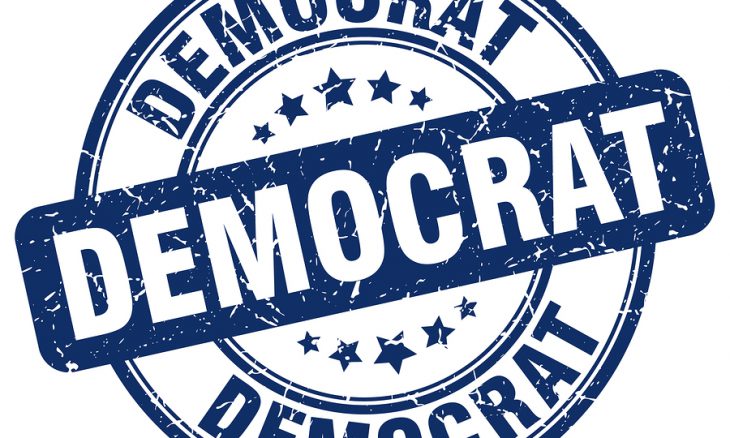Since the presidential election, Trump has dominated the news with his Twitter comments, controversial cabinet appointments, and extraordinary views on major issues for 2017. What we don’t hear much about is the Democratic Party and whether their current values still resonate with enough voters to be successful in the future. Maybe it should re-brand itself?
This situation is similar to the challenges many brands face during their life cycle when their appeal becomes stale or irrelevant. Because consumers, competition, and new trends are always changing the landscape, a brand audit, or assessment of the core values and promises of a brand, plus how it performs against expectations, can be an important tool for diagnosing problems and sustaining a brand’s vitality.
America’s two-party system has a long history. Although George Washington warned about the “dangers of parties,” political parties soon arose from a quarrel between Thomas Jefferson and Alexander Hamilton on how much power to grant the federal government. Democrats have always prided themselves as the “party of the people,” attracting immigrants, blue-collar workers, women, minorities, and generally “people in need,” and take a more liberal stand on social issues. Meanwhile, the Republican Party, with Abraham Lincoln as their first successful candidate in 1860, takes a more conservative view on issues, and believes that the federal government should play a less active role in people’s lives.
Today the core philosophy of each party remains intact, but the basic appeal of each party brand is facing serious questions. In light of the pervasive losses across the board in the November election, federal and state, the Democrats would be wise to now assess their vulnerabilities and explore a new brand image that would rejuvenate its bond with its traditional constituents. Taking a page out of the marketing handbook, a brand audit would help identify the most passionate concerns of voters and new opportunities to rebound in the future, focusing on these key elements for an improved brand positioning:
- Situation/problem/trends – We are living with a crisis of trust now. The Edelman trust barometer shows that the least trusted institution is government at just 40%, a new low. Promises by most candidates at every level from both parties are perceived with skepticism and a lack of credibility. By 2016, many Americans were fed up and simply wanted a change. Despite obvious flaws, Trump became the choice to upstage the status quo, especially among low-middle income workers in the Midwest. Most candidates representing the Democratic Party brand (including Hillary) were perceived as the same old, same old–nothing new, although Bernie Sanders did evoke refreshing passions, especially with millennials. This grass roots desire for fundamental change in the political system reflected a worldwide populist trend too.
- Target audience – The question of relevance and appeal starts with the potential voters for the Democratic Party brand. Two key segments of the traditional Democratic Party voter constituency, millennials and especially blue-collar workers, were the least trustful and most frustrated with the status quo. They wanted change, something new, and Hillary and other Democratic candidates were not their answer.
- Competition – The alternative to the Democratic Party brand was not so much the Republican Party Brand, which can probably use a re-branding itself, but the maverick Trump brand, even though he did not reflect all the core values of the Republican Party. Yes, Trump was conservative, but more importantly, he focused on this emotional desperation for change among less educated voters who were worried about jobs, the traditional core of the Democratic Party.
- Benefit/promise – This is the heart of branding–what a brand can offer its customers in order to establish a trustful connection, ideally on an emotional level. Voters perceived Hillary (and other Democratic candidates) as offering more of the same, but lacking authenticity, passion, and trust. Instead Trump spoke from his heart in raw language that appealed to low-middle income voters. While he never offered many details, his over-simplified, emotional promises captured the hearts of rural Americans. The opportunity for the Democratic Brand is to re-frame its core values and promises so they appear new, different and more relevant, and definitely create a passion that will emotionally captivate its core constituents.
- Reasons to believe new promises – Credibility and authenticity are essential for winning over such skeptical voters. Perhaps most important for the Democratic Party is to find refreshingly new, younger, and more charismatic candidates (e.g. like a Justin Trudeau-type of personality). Despite all his flaws, Trump was viewed as a change agent, and showed that prior political experience is not necessary, and indeed could be an advantage for many. Both parties surprisingly stay with the past, re-electing stale leaders like Nancy Pelosi and Mitch McConnell. Another high potential opportunity would be an anti-corruption campaign which would strongly appeal to voter frustration and address the ubiquitous perception of unethical activities of power obsessive politicians. This would include challenging the influence of wealthy donors, Wall Street, lobbyists, and corporate leaders, changing the campaign finance laws, and also revealing untruthful messages on social media. Such a credible initiative to improve the integrity of the political system would also help convince more millennials to come out and vote.
The brand image of the Democratic Party definitely needs an overhaul to become more fresh, relevant, and attractive to its core constituents again. A thorough brand audit would help. Whatever the final re-positioning promises entail, it must appeal to the emotional passions of the voter populations that represent the biggest opportunity for the next elections–millennials and the diligent voters in middle America.





